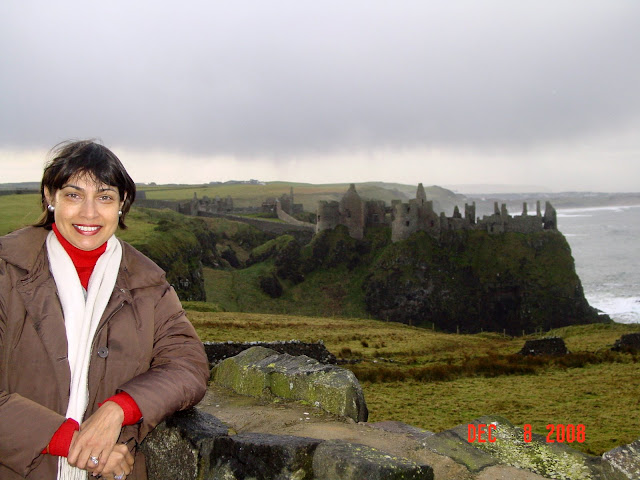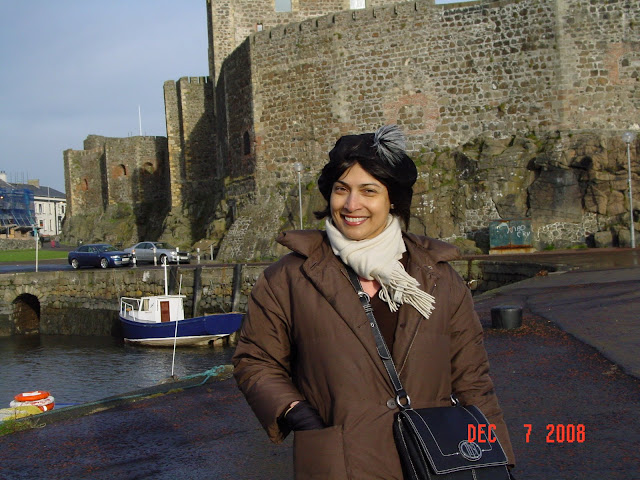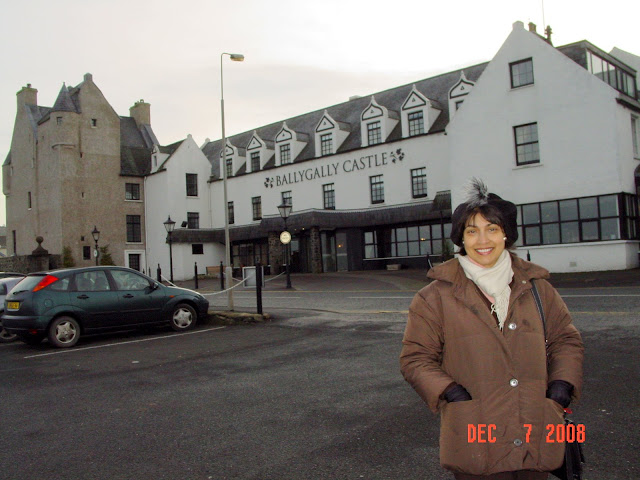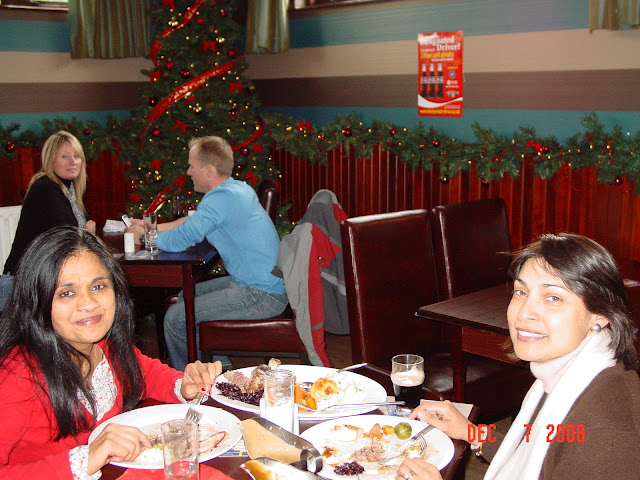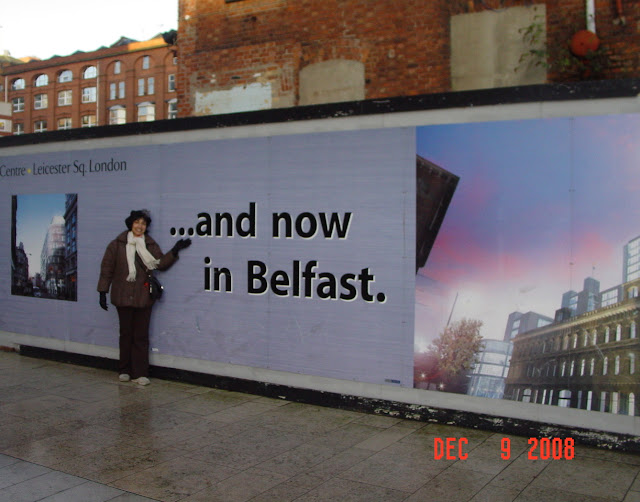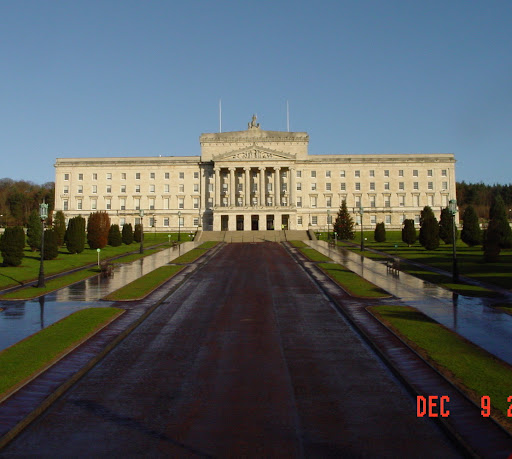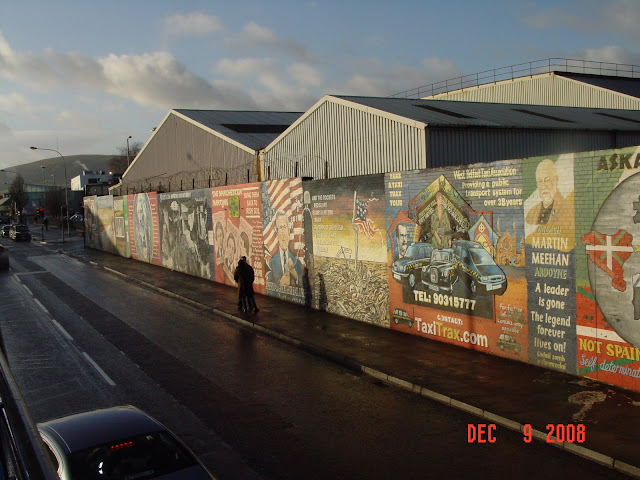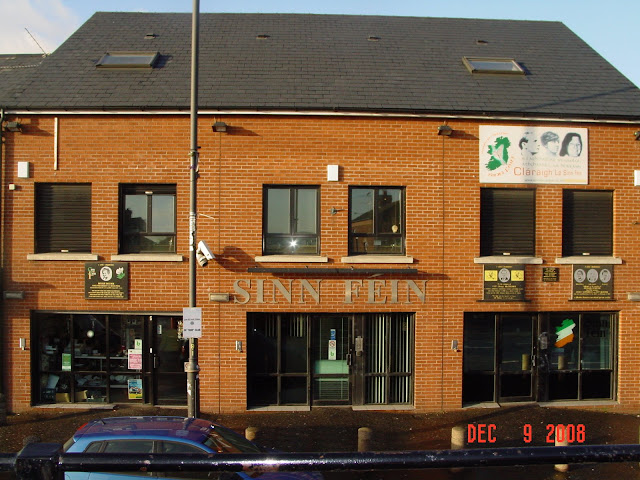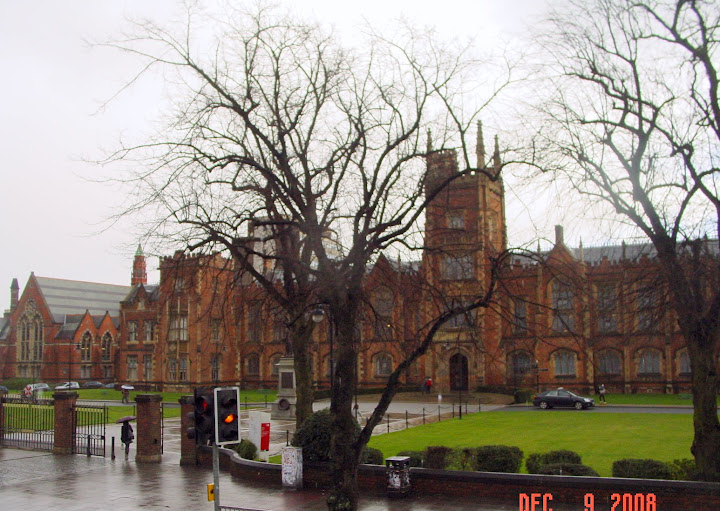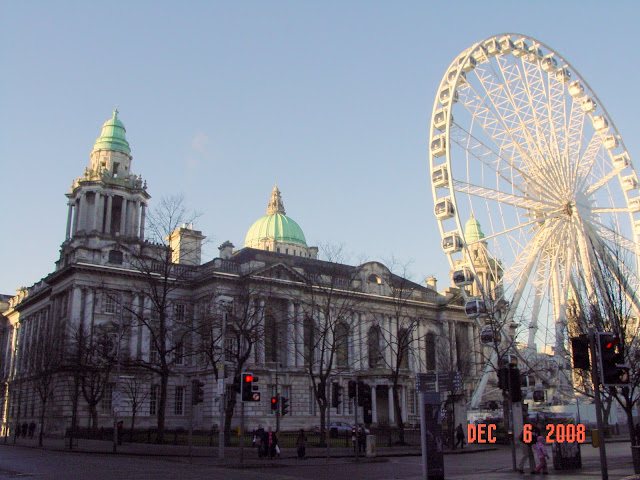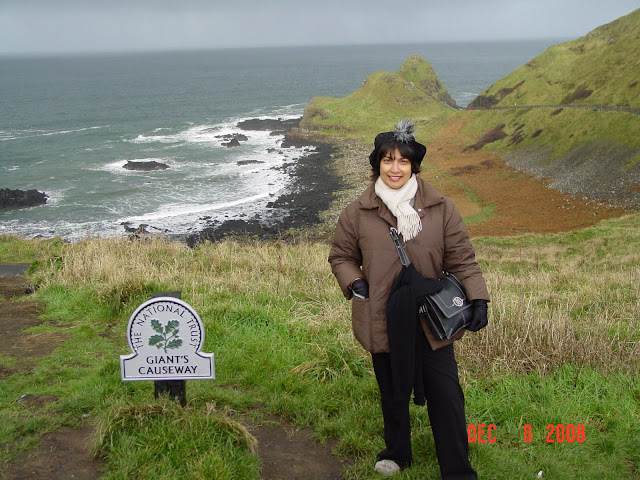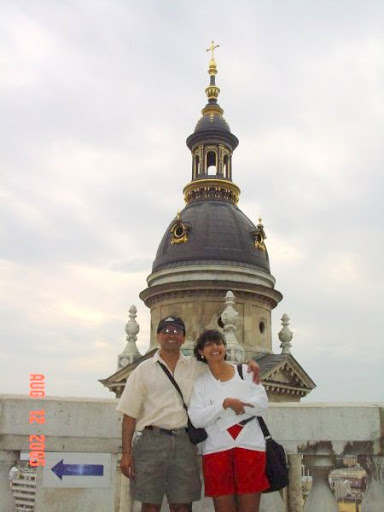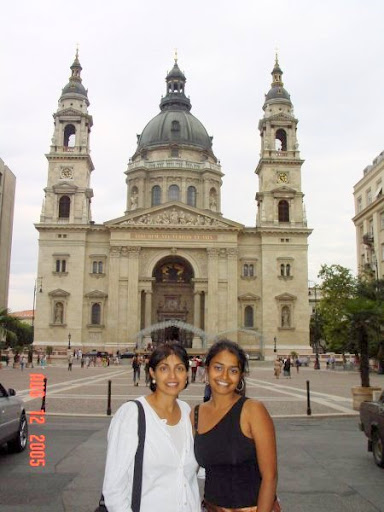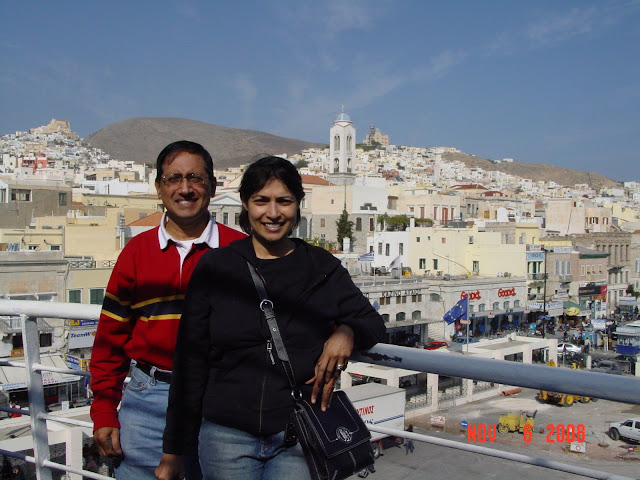Seated at the top of the famous Giant’s Causeway
Paddywagon runs day tours to the Giant’s Causeway on the North Atlantic shore of Ireland–a must-do trip for anyone who visits Belfast, even if briefly. Several companies run this tour but Paddywagon was different in that it did not follow the scenic coastal route but went inland to the Giant’s Causeway and from there traveled further west to Londonderry or simply Derry as the Catholics call it. Since I was keen to see as much of Northern Ireland as I could, I opted for Paddywagon.
This meant awaking at the crack of dawn to walk to a neighboring hostel on Lisburn Road to pick up the coach at 8. 30 am. I bought a croissant and a take-away coffee and set off, found our driver/guide David and a bunch of other young folk brave enough to visit Belfast in the heart of winter. By the time we set off from the city, it was about 9. 30 am. As we passed through the urban midst of Belfast, David pointed out buildings of particular interest. Before long, we were coasting out of the city and on to the highway, passing by Cave Hill, which had been the inspiration for Jonathan Swift’s Gulliver’s Travels. The profile of the hill does look suspiciously like a giant sleeping on his back. When viewed against the dockyards of Harland and Woolf, the many men rushing back and forth all day appeared to be running across the giant’s face and stomach. This provided the image for Gulliver in the Land of the Lilliputs and led to the 18th century novel that sealed Swift’s reputation.
An hour later, we arrived at one of Northern Ireland’s best-known attractions, the Carrick-A-Rede Rope Bridge which is simply a swinging cable bridge that connects the mainland to a small salmon fishing island. To get to the island, visitors cross the bridge, one at a time. This wobbles dangerously about 70 feet above the sea and is not for the faint hearted. I doubt I would have given it a shot, but at any rate, I wasn’t allowed to find out as the bridge is closed in the off-season. Perched high above the cliffs, we received a good view of it as well as the distant shores of Scotland (the Mull of Kintyre was clearly visible when the fog lifted) just behind Rathlin Island to which ferries sail in the summer. The sheer isolation of this venue was deeply striking espeically when viewed against the emerald-green of the dales that sloped down softly to the seas.
About half an hour later, past marvelous rural countryside, dotted liberally with black-faced sheep, we arrived at the Giant’s Causeway about which I had heard so much when I was researching a visit to the Republic of Ireland about five years ago. David told us about a restaurant called The Nook that served really good traditional Irish fare and as I was keen to taste some of it, he took orders from all of us. He recommended the Irish Stew strongly but the Steak and Ginnness Pie even more warmly–so I opted for that. We were given an hour at the Causeway and were told to return at noon to the restaurant for lunch.
The Giant’s Causeway is a natural phenomenon casued by a sudden volcanic eruption, 60 million years ago, that pushed molten basalt from the core of the earth to the surface. Because it cooled down rather quickly, it contracted and, in the process, formed straight columns that have perfectly even polygonal sides. These nest together in a sort of honeycomb at the water’s edge, washed by the thundering waves of the Atlantic.
Of course, because Ireland is also full of local folklore, the story goes that an Irish giant named Finn McCool fell in love with a Scottish damsel named Nieve. To reach her easily, he built the Causeway. When Nieve’s love, the Scottish giant Oonagh, realized that Nieve had left him for Finn, he set out to claim her back. Finn was afraid of the consequences of a conflict as Oonagh was larger and stronger than he was. But the wily Nieve disguised Finn as a baby and instructed him to lie on his back on the bed. When Oonagh arrived in Ireland, Nieve informed him that she could not return with him to Scotland as she had just had Finn’s baby who, she pointed out, was asleep on the bed. When Oonagh saw the size of the ‘baby’, he panicked, wondering just how huge the father would be if the baby was so massive. He turned tail and returned to Scotland in such a hurry that he broke the causeway into pieces leaving only a few bits of it surviving today. David told us the story with relish and invited us to choose whichever version most appealed to our temperaments.
The National Trust manages the Giant’s Causeway which has been ranked as one of the ten best free sights in the world. To get to the sight, however, you need to wind your way down a steep mountainside to reach the edge of the ocean. While making it down is manageable enough for most people, the climb upwards is steep and no picnic–at least not for those who do not exercise regularly. I was pleased to see a small coach called the Causeway Coaster coasting right past by and when I flagged it and asked the driver if I could hop one, he said, Sure, for a pound each way, I was welcome. Well, I was downhill in two shakes of a tail and before I knew it, the rain came down in sheets and it grew bitterly cold.
Of course, this sudden dip in temperature had to happen at a time and in a place in which there was no where to shelter. Fortunately, I had my brolly in my pocket and I whipped it out smartly but it was no match against the ferocity of the wind. Then, I was taking pictures quickly of the vast basalt columns that form a natural wall on the hillside near a projecting mountain called the Aird’s Snout.
When I had my share of this portion of the Causeway, I walked towards the bus stand and discovered that the other passegners on my coach had reached the shore. At this point, the hexagonal columns were most marked, their regularlity stunning in the visuals they presented. Though lapped by the waves and whipped by the wind, they created a startling effect on my senses as I took them all in. Some of them created mounds, like little hills, and we climbed and posed on these to take pictures. Others formed natural stone steps. Yet others spread out evenly towards the waves. The colors were also varied. Grey, black, even ochre, they are a wondrous sight and no matter how many pictures you might have seen of the phenomenon, it is still fascinating.
Then, I was on the Coaster again, driving up to the summit where, at the gift store, I purchased a few postcards as souvenirs. All of us were ready for our meal by that point. We were hungry and more importantly, we were freezing. The Steak and Guinness Pie completely lived up to its promise. Portions seemed to have been created for Finn McCool and Oonagh–they were gigantic! I was able to eat heartily and have more than half of my plate packed up for my evening meal. Served with mashed potatoes, it was Irish comfort food at its best and we all ate well as we washed it down with glasses of Guinness–does anyone know why Guinness tastes so good in Ireland?
Coastal Castles:
To follow me on the next leg of my travels to Londonderry, please click on the link.
Bon Voyage!

